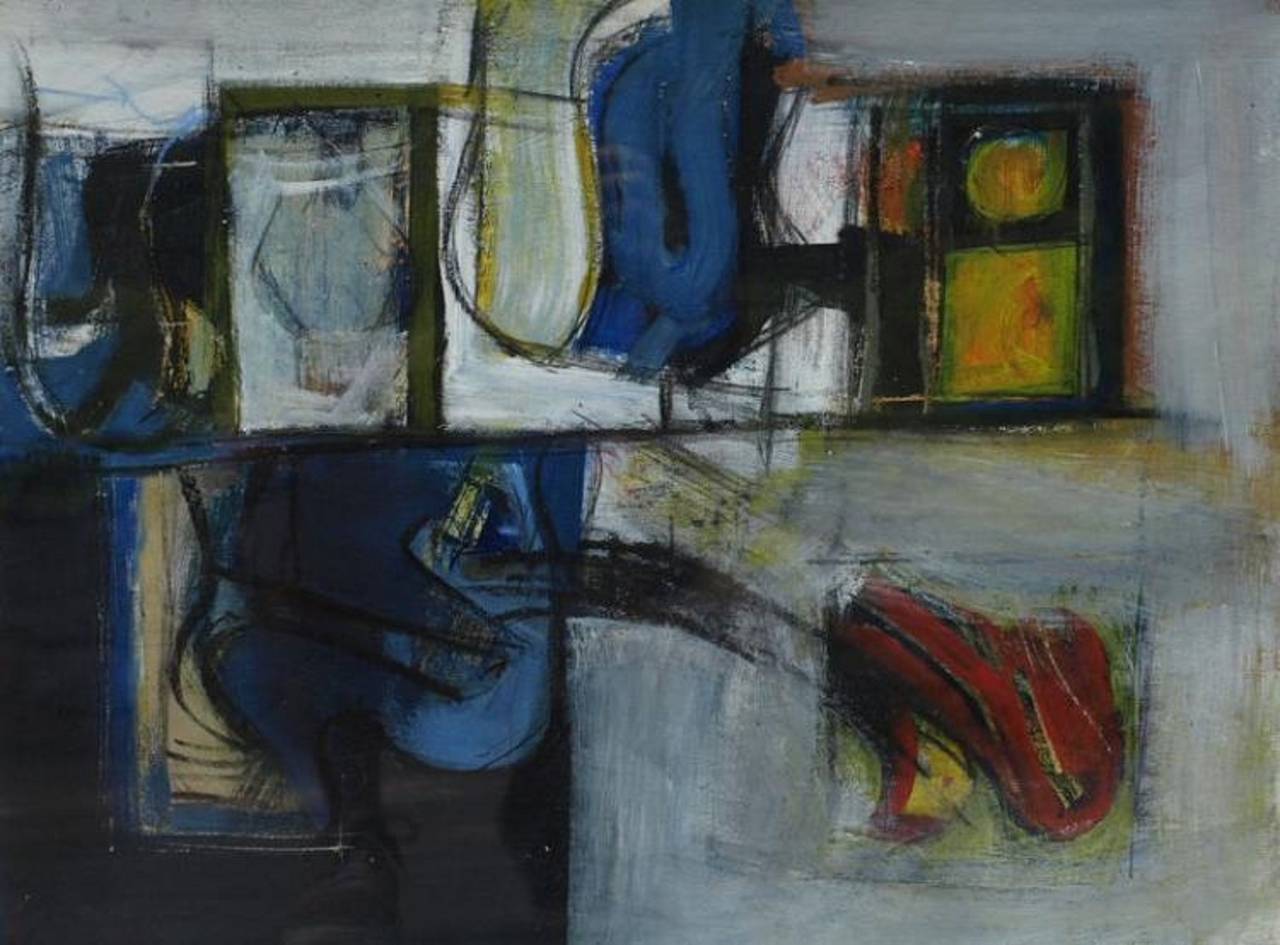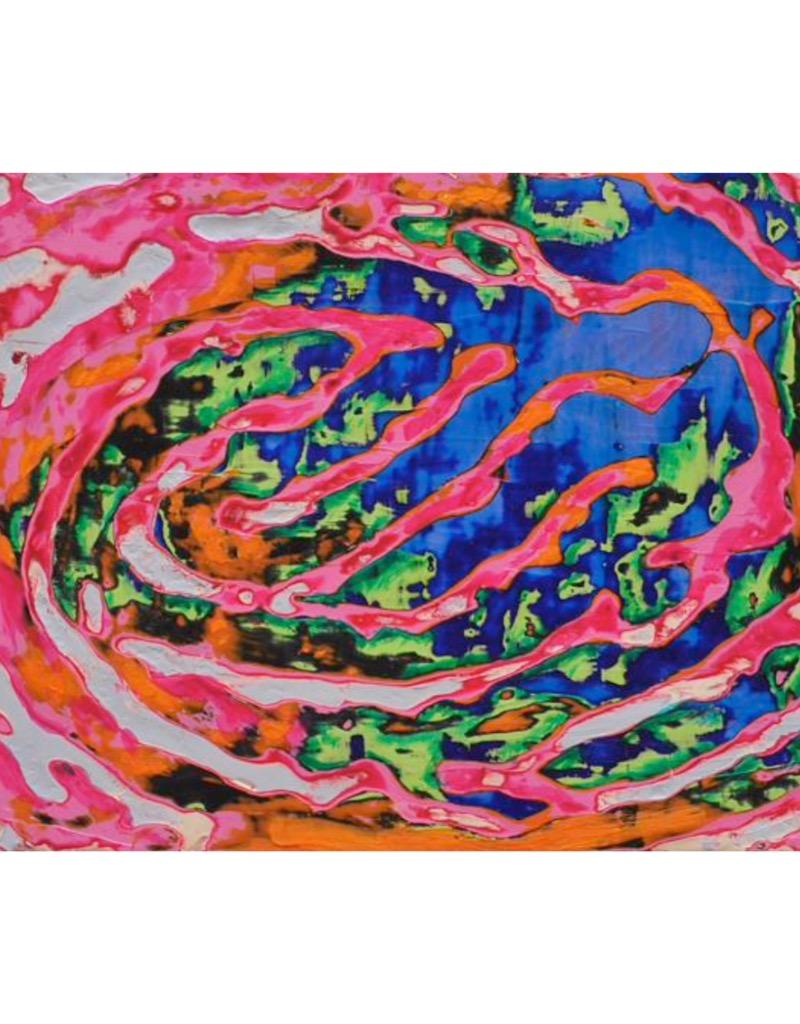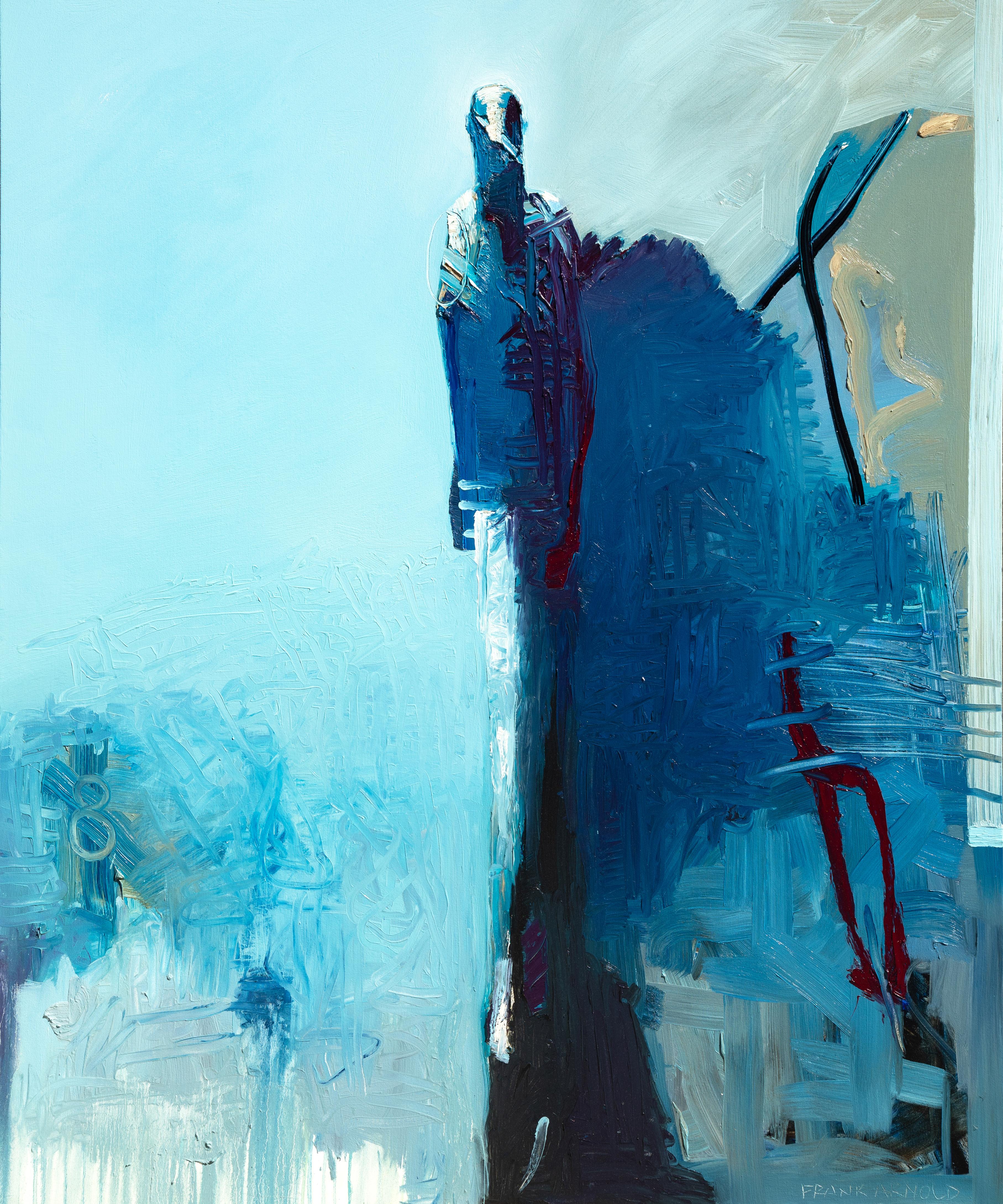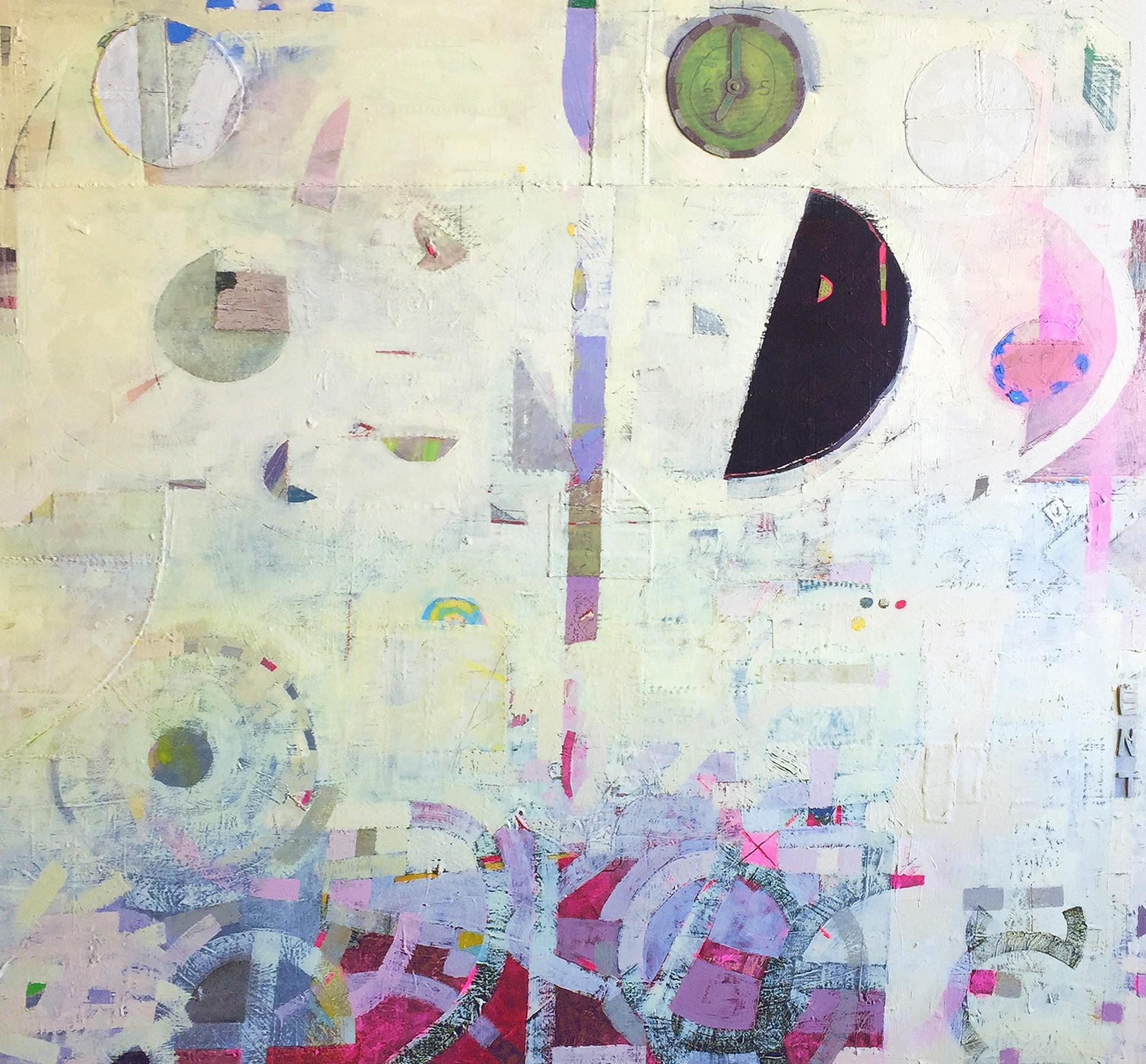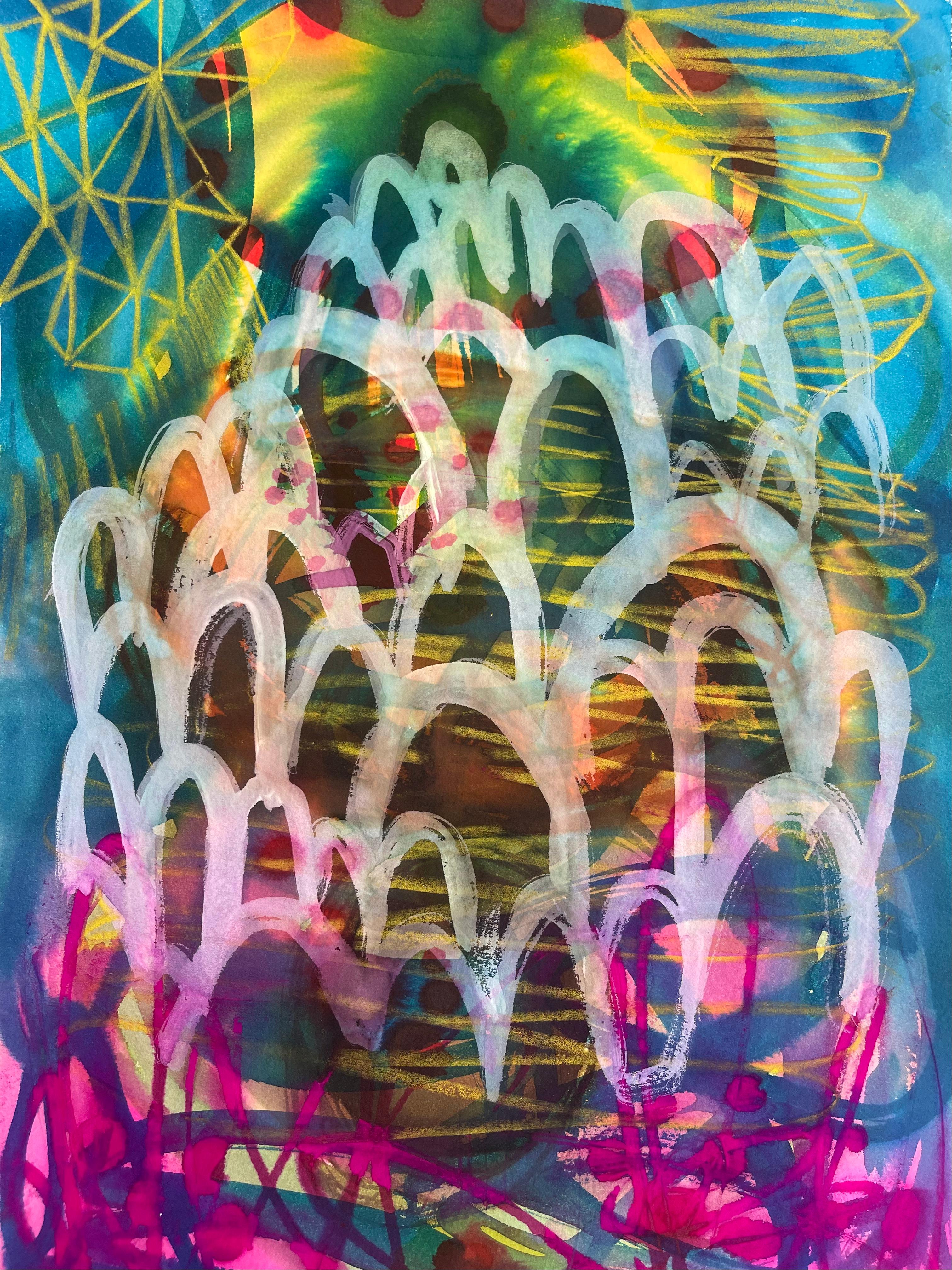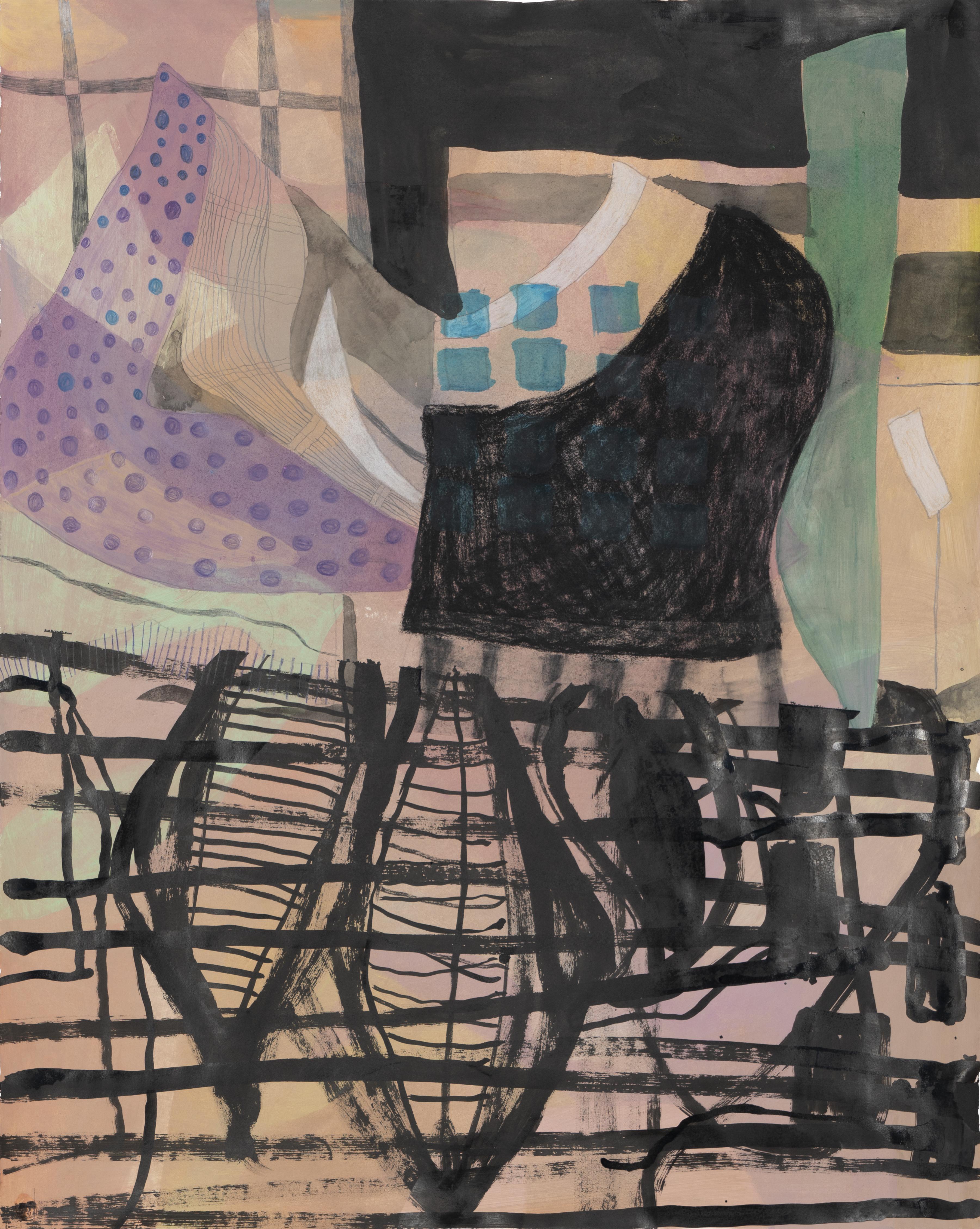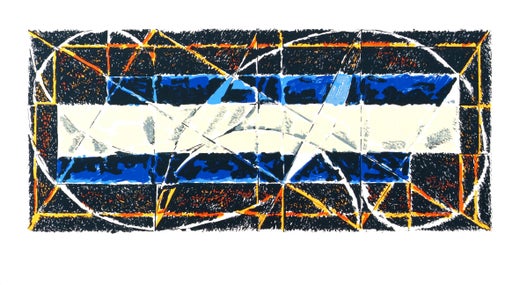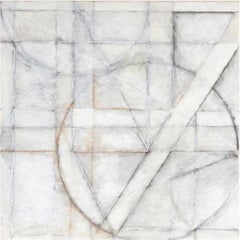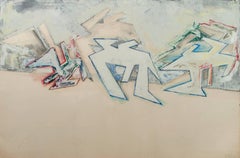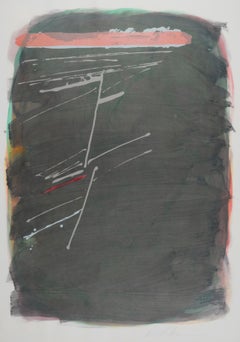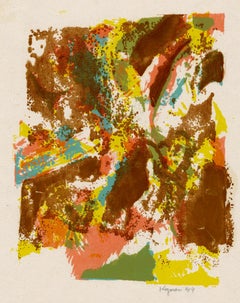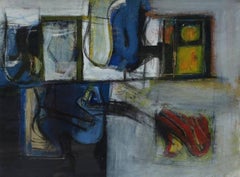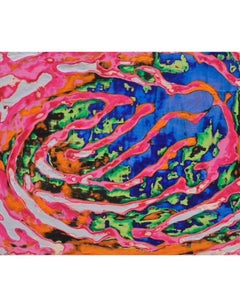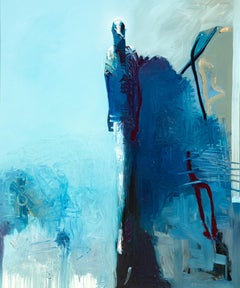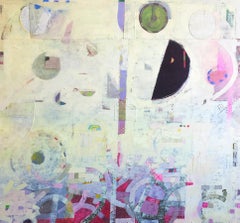Want more images or videos?
Request additional images or videos from the seller
1 of 9
Harry NadlerSpiral of Time II1986
1986
$2,400
£1,811.21
€2,073.57
CA$3,384.80
A$3,716.08
CHF 1,938.69
MX$44,969.78
NOK 24,298.45
SEK 22,895.53
DKK 15,478.62
About the Item
Spiral of Time II
Mixed media with acrylic on paper, 1986
Signed lower right (see photo)
Condition: Excellent
Image size: 35 x 15 1/2 inches
Provenance: Peter Marciniak, New Hampshire
Distinguished Midwest Private Collection
Select Exhibition:
1991 Franz Bader Gallery, Washington, D.C. (solo)
1980 Guggenheim Museum, New York, NY
1974 Bertha Schaefer Gallery; New York, NY (solo)
1972 Childe Hassam Purchase Show, National Institute of the Arts and Letters
1971 "The Turkish Bath of Ingres,” Louvre Museum, Paris, France
1971 Guest Artist, Tamarind Institute; Albuquerque, NM
1970 “American Drawings of the Sixties,” New School Art Center; New York, NY
1966 Dorsky Gallery, New York, NY (solo)
1962 Dwan Gallery; Los Angeles, CA (solo)
1959 Dwan Gallery, Los Angeles, CA (solo)
Museum Collection:
Smithsonian American Art Museum
Albuquerque Museum, Albuquerque, NM
Cincinnati Art Museum, Cincinnati, OH
Detroit Institute of Arts, Detroit, MI
Fine Arts Museum, Santa Fe, NM
Guggenheim Museum, New York, NY
University of New Mexico Art Museum, Albuquerque, NM
Oklahoma Art Center, Oklahoma City, OK
Pennsylvania Academy of the Fine Arts, Philadelphia, PA
Storm King Art Center, Mountainville, NY
Wesleyan University, Middletown, CT
Harwood Museum of Art, Taos
"An abstract painter who lived in New York City; Amagansett, Long Island, and Albuquerque, New Mexico, Harry Nadler is described as a "formalist abstract painter of the 1960s-90s whose works were marked by their rich colors, transparencies, and labyrinthine constructions. —The attempt to capture in a purely abstract imagery the quintessential quality of light and contour that emanate from a particular landscape is a hazardous pictorial ambition, but Mr. Nadler has met the challenge of this problem with remarkable success.˜ (Hilton Kramer, The New York Times, April 27, 1974)
Noted Fine Print Publications: Lincoln Center/Fine Art Prints,1990, "Live From Lincoln Center", screen print,edition72
Harry Nadler Biography
DESCRIPTION WITHOUT PLACE
A story Harry told me that he felt was a metaphor for his life and work was about his "golden bird." One day, when he was eight, he was walking home from school, a dangerous task for a Jewish boy in East Los Angeles in the '30s. He carried a painting he had made in school. He had to walk through a dark tunnel and was afraid. His painting of a beautiful, golden bird, radiating tropical colors, shone in the dark and he lost all his fear. The image of beauty, flight, darkness, and the power of his own image-making, stayed with him his whole life.
He discovered a kind of freedom in school; he graduated when he was 16, went to art school, supported himself as an illustrator for a newspaper; then discovered a wide new world of literature and fine arts at the University of California, Los Angeles. He earned a B.A. and an M.A., and his talent as an artist manifested itself in teaching assistantships and in painting awards and early shows. His affinity for European painting was strong, and he yearned to go to New York and immerse himself in the museums and in the current work being done by the abstract expressionists.
Awarded a Fulbright Scholarship to Spain in 1960, Harry fulfilled his dream of traveling to Europe and studying Goya's Disasters of War at the Prado. His commitment to finding a visual language to express his deep ethical concerns began at this time. He produced a series of works dedicated to the victims of the Holocaust and called the Buchenwald Landscapes and exhibited this body of work at the end of his year in Spain. He agonized over it, feeling that the imagery was too literal. He was searching for something--a formal instrument that reached a meaning beyond the obvious horror of the subject matter.
On his return to the United States, he relocated to New York City, believing that his artistic roots lay there. He first made a living by teaching extension courses, while studying great paintings in the city's museums, participating in the current art world and developing his own work.
Between 1961 and 1965, Harry made paintings of strange spaces filled with autobiographical objects. The poetry of Wallace Stevens powerfully affected him especially. For Harry, the activity of painting was a way of connecting separate realities. The work of imagination, metaphor, or "seeming" as Stevens described it, takes place in the gap between disparate elements, making connections of meaning on a deeper level. In this gap, he struggled to formulate with precision his understanding of his tools: his materials, his knowledge of philosophy and art history, his religious tradition, his life experience. In this gap, he lived with the anxiety of knowing, with faith in a process larger than himself. And he worked. Geometry became a way of speaking about ultimate purity, wholeness, relatedness; the sensuous material of paint and the particular way he combined those materials became a way of expressing the quality of his own experience.
He named a painting series Description Without Place, in honor of Stevens. In this series, windows and boxes hold images of experience (painted objects, that both separate and merge the spaces of the painting. He combines images of crucifixion and blackness, with the vitality of life in both object and color. The breaking of edges and boundaries, merging the spatial and the temporal, continued throughout his life.
In 1965, he was offered a teaching position at Wesleyan University in Connecticut. There he began his series, Homage to Ingres, shown in New York City in 1969, followed by a sports series and collages, based on biomorphic forms. At this period, his explorations were about weaving the space and creating the ambiguity of figure and ground.
In 1971, Harry took a job at the University of New Mexico, with the intention of working into a part-time situation and maintaining a house and studio in Amagansett, New York. He continued cutting up images (derived from his Ingres paintings) and made a lithograph based on this work at the Tamarind Institute in Albuquerque. During this period, he also worked on new grid paintings, moving from biomorphic forms to an emphasis on the field of light and space in a more abstract way. He showed his New Mexico paintings in New York City in 1974. These luminous works were followed by very dark paintings using similar imagery.
In 1975, he turned his canvases on the diagonal and began a series of diamond paintings, applying black and white and then gray paint. He was always involved with the mystical Cabalistic symbolism of "white fire/black fire." His imagery became involved in ambiguity between two- and three-dimensional space. In 1976, after spending the summer in Amagansett, he began a new series of diamond paintings called Ocean Rhythms. Searching for the quality of the ocean without representing it literally, he used waves of motion to create that field/space that was his formal concern. In 1977, he continued the same diamond format, but became interested in more symbolic and calligraphic imagery, still attentive to the creation of that flat field. In late 1977-78, he returned to the square format; the imagery became pictographic, and one of his old concerns reemerged: the issue of edges and the center. This was the beginning of the Labyrinth Series. He became more involved in the richness of the surface, and moved into color to create a dark luminosity. At this time, he remarked, in characteristic humor, that the labyrinth was a metaphor for his life; he didn't know where he was going. He showed these works in 1979 in New York City and was much stimulated by the response.
In 1980, his format changed to the vertical and his medium to egg tempera on rice paper stretched onto canvas. This enabled him to layer transparent colors, finding a new way to achieve the luminosity for which he strived. He joined the vertical panels to make triptychs, again in a desire for transcendent feeling. When he came to the end of this series, he suddenly needed to go back to creating color that emerged from the dark. He began a series of large square, dark works, with a labyrinthine field of glowing, colored objects, again indicating an ambiguous two- and three- dimensional feeling, all this painted in thick encaustic.
- Creator:Harry Nadler (1930, American)
- Creation Year:1986
- Dimensions:Height: 35 in (88.9 cm)Width: 15.5 in (39.37 cm)
- Medium:
- Movement & Style:
- Period:
- Condition:
- Gallery Location:Fairlawn, OH
- Reference Number:Seller: FA109171stDibs: LU14016250172
Harry Nadler
Nadler was born in 1930 in Los Angeles. He graduated from UCLA with a Masters degree and joined the faculty of Wesleyan University in CT. In 1971, he moved to New Mexico to teach painting at the University of New Mexico, while keeping a home in Amagansett, NY. Nadler died in 1990 in Albuquerque, NM.
About the Seller
5.0
Recognized Seller
These prestigious sellers are industry leaders and represent the highest echelon for item quality and design.
Platinum Seller
Premium sellers with a 4.7+ rating and 24-hour response times
Established in 1978
1stDibs seller since 2013
813 sales on 1stDibs
Typical response time: <1 hour
Associations
International Fine Print Dealers Association
- ShippingRetrieving quote...Shipping from: Fairlawn, OH
- Return Policy
Authenticity Guarantee
In the unlikely event there’s an issue with an item’s authenticity, contact us within 1 year for a full refund. DetailsMoney-Back Guarantee
If your item is not as described, is damaged in transit, or does not arrive, contact us within 7 days for a full refund. Details24-Hour Cancellation
You have a 24-hour grace period in which to reconsider your purchase, with no questions asked.Vetted Professional Sellers
Our world-class sellers must adhere to strict standards for service and quality, maintaining the integrity of our listings.Price-Match Guarantee
If you find that a seller listed the same item for a lower price elsewhere, we’ll match it.Trusted Global Delivery
Our best-in-class carrier network provides specialized shipping options worldwide, including custom delivery.More From This Seller
View AllTaos Series
By Harry Nadler
Located in Fairlawn, OH
Taos Series
Mixed media on handmade paper
Signed and dated by the artist lower right
Archival framing with Conversation Glass
Frame size: 29 3/4 x 34 inches
Image size: 19 1/2 x 19 1/2 inches
Provenance: Peter Marciniak, New Hampshire
Distinguished Midwest Private Collection
Regarding the artist:
Select Exhibition:
1991 Franz Bader Gallery, Washington, D.C. (solo)
1980 Guggenheim Museum, New York, NY
1974 Bertha Schaefer Gallery; New York, NY (solo)
1972 Childe Hassam Purchase Show, National Institute of the Arts and Letters
1971 "The Turkish Bath of Ingres,” Louvre Museum, Paris, France
1971 Guest Artist, Tamarind Institute; Albuquerque, NM
1970 “American Drawings of the Sixties,” New School Art Center; New York, NY
1966 Dorsky Gallery, New York, NY (solo)
1962 Dwan Gallery...
Category
1980s Abstract Paintings
Materials
Mixed Media
untitled
By Dennis Ashbaugh
Located in Fairlawn, OH
Untitled
Mixed media on paper, 1979
Signed and dated ‘79 lower right (see photo)
Sheet size: 31 1/2 x 48"
Frame: 34 1/4 x 50 1/4"
Provenance:
Members Gallery, Albright-Knox Art Galle...
Category
1970s Abstract Abstract Paintings
Materials
Mixed Media, Oil
Untitled
By Dan Christensen
Located in Fairlawn, OH
Untitled
Monotype printed in colors, c. 1980
Signed in pencil lower right (see photo)
Condition: Excellent
Sheet size: 42 x 30 inches
Provenance: Distinguished Midwest Private Collection
SELECTED MUSEUM COLLECTIONS Addison Gallery of American Art, Andover, Massachusetts Albrecht-Kemper Museum of Art, St. Joseph, Missouri Albright-Knox Art Gallery, Buffalo, New York Allen Memorial Art Museum, Oberlin, Ohio Art...
Category
1980s Abstract Abstract Prints
Materials
Monotype
Untitled
By Myron Kozman
Located in Fairlawn, OH
Untitled
Screen print, 1941
Signed and dated in pencil lower right
From an unnumbered edition of 6
Condition: Excellent
Image size: 7 1/4 x 5 3/4 inches
Sheet size: 10 x 8 inches
Pr...
Category
1940s Abstract Abstract Prints
Materials
Screen
Untitled (Abstraction)
By Ray H. French
Located in Fairlawn, OH
Signed and dated by the artist vertically lower left edge.
Part of an experimental series of works using motor oil, India Ink, adhesives, sand, and various other mediums.
Category
1960s Abstract Paintings
Untitled
By Peter Marks
Located in Fairlawn, OH
Untitled
Acrylic with gold leaf on canvas collage mounted on canvas, c. 2002
Unsigned
Provenance: Estate of the Artist
Condition: Excellent
Imag...
Category
Early 2000s Abstract Abstract Paintings
Materials
Oil
$600 Sale Price
50% Off
You May Also Like
Abstract
By Harry Nadler
Located in Saratoga Springs, NY
Singed verso.
An abstract painter who lived in New York City; Amagansett, Long Island, and Albuquerque, New Mexico, Harry Nadler is described as a "formalist abstract painter of t...
Category
Abstract Abstract Paintings
Materials
Archival Paper, Mixed Media
$4,500
Spiral
By Greg Angus
Located in Toronto, ON
Original Encaustic Oil on Panel
Hand Signed by Greg Angus
Category
21st Century and Contemporary Abstract Paintings
Materials
Encaustic, Oil, Board
$1,350
Z58
By Frank Arnold
Located in Fresno, CA
"Z58" Oil on Canvas with heavy impasto range of Blue pigments. Frank Arnold is thought by many to be one of the foremost abstract figurative painters and sculptors of our time. He is...
Category
2010s Abstract Abstract Paintings
Materials
Canvas, Oil
$88,800
Unbound
By David Bender
Located in New York, NY
Abstract piece on canvas. Textural quality from layering of paints. Not framed. But canvas is painted on the sides.
About the Artist:
David Bender is an award-winning Brook...
Category
2010s Abstract Abstract Paintings
Materials
Canvas, Acrylic
Spiral of Energy
Located in San Francisco, CA
Paula Valenzuela
Spiral of Energy, 2025
Watercolor, alcohol ink and crayon on paper
14 x 10 inches
This one-of-a-kind work on paper comes unframed and ships in a tube.
Paula Valenz...
Category
21st Century and Contemporary Abstract Abstract Paintings
Materials
Paper, Crayon, Ink, Watercolor
Tangent 3
Located in Dallas, TX
ink, charcoal, & acrylic on paper
Category
2010s Abstract Abstract Paintings
Materials
Paper, Charcoal, Ink, Acrylic
More Ways To Browse
Labyrinth Vintage
Vintage Black And White Sports Photos
Lincoln Center Prints
Diamond Painting Vintage
Used Precision Tools
Sam Tchakalian
Sarah Sense
Shel Silverstein
Shirley Lewis
Stanley Rosenthal
Steve Wheeler
Tiffany Stained Glass Collectors Society
Vintage Marble Knives
W Adams Large Oil Paintings
W R Stevenson
Whatever Gallery
William C Palmer
William Weege
